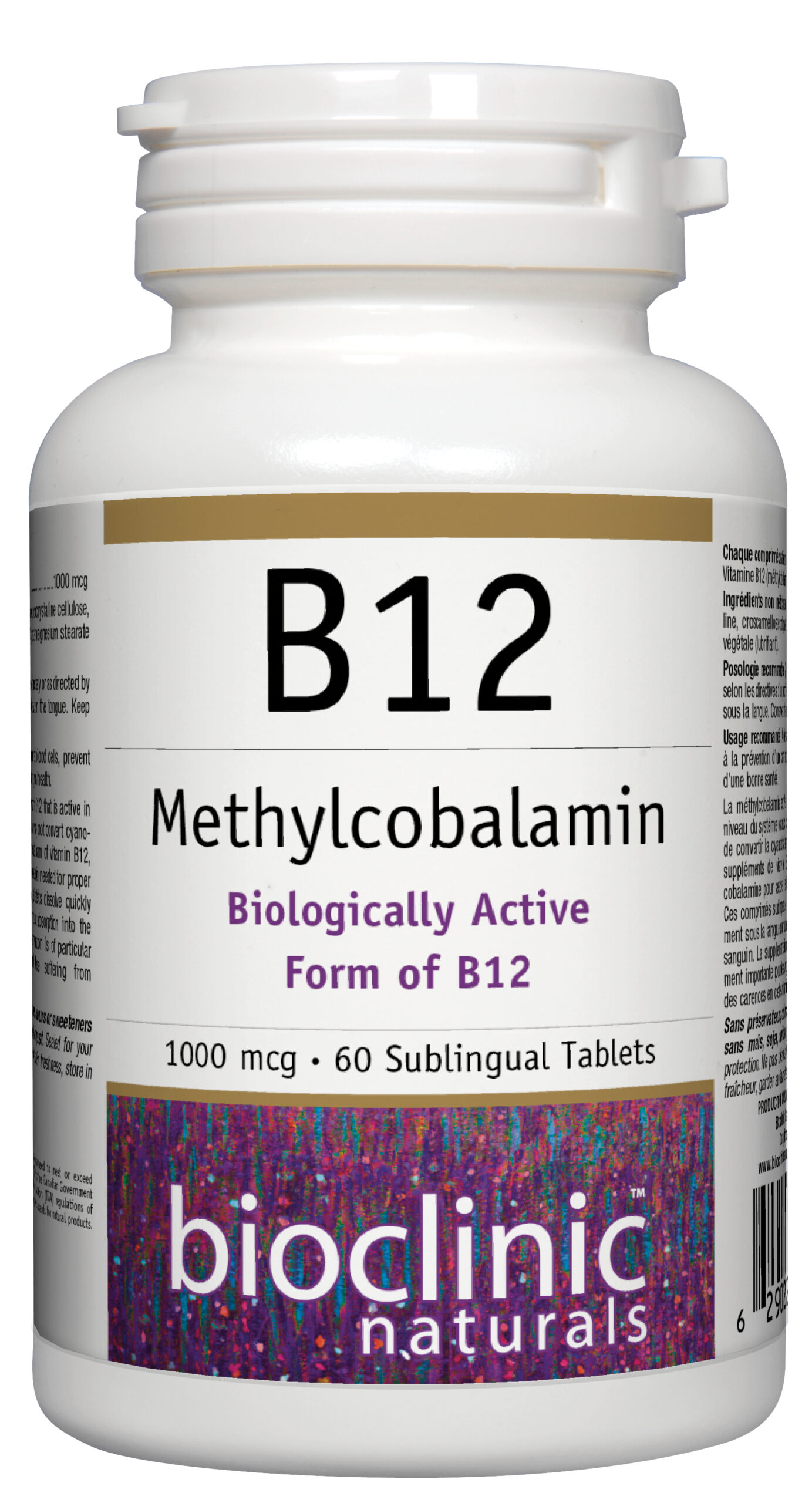
Methylcobalamin
1000 mcg
60 Sublingual Tablets ( SKU: 9420, NPN: 80026765 )
Medicinal Ingredients
| Each Tablet Contains: | |
| Vitamin B12 (Methylcobalamin) | 1000 mcg |
Non-Medicinal Ingredients
Lactose monohydrate, microcrystalline cellulose, croscarmellose sodium, vegetable grade magnesium stearate (lubricant).
Dosage:
Recommended Adult Dose: 1 tablet per day or as directed by a health care professional. Dissolve under the tongue.
Warnings:
Keep out of reach of children.
Allergens:
Contains no artificial colours, preservatives, or sweeteners; no starch, sugar, wheat, gluten, yeast soy, corn, egg, fish, shellfish, salt, tree nuts, or GMOs. Suitable for vegetarians. Sealed for your protection. Do not use if seal is broken. For freshness, store in a cool, dry place.
